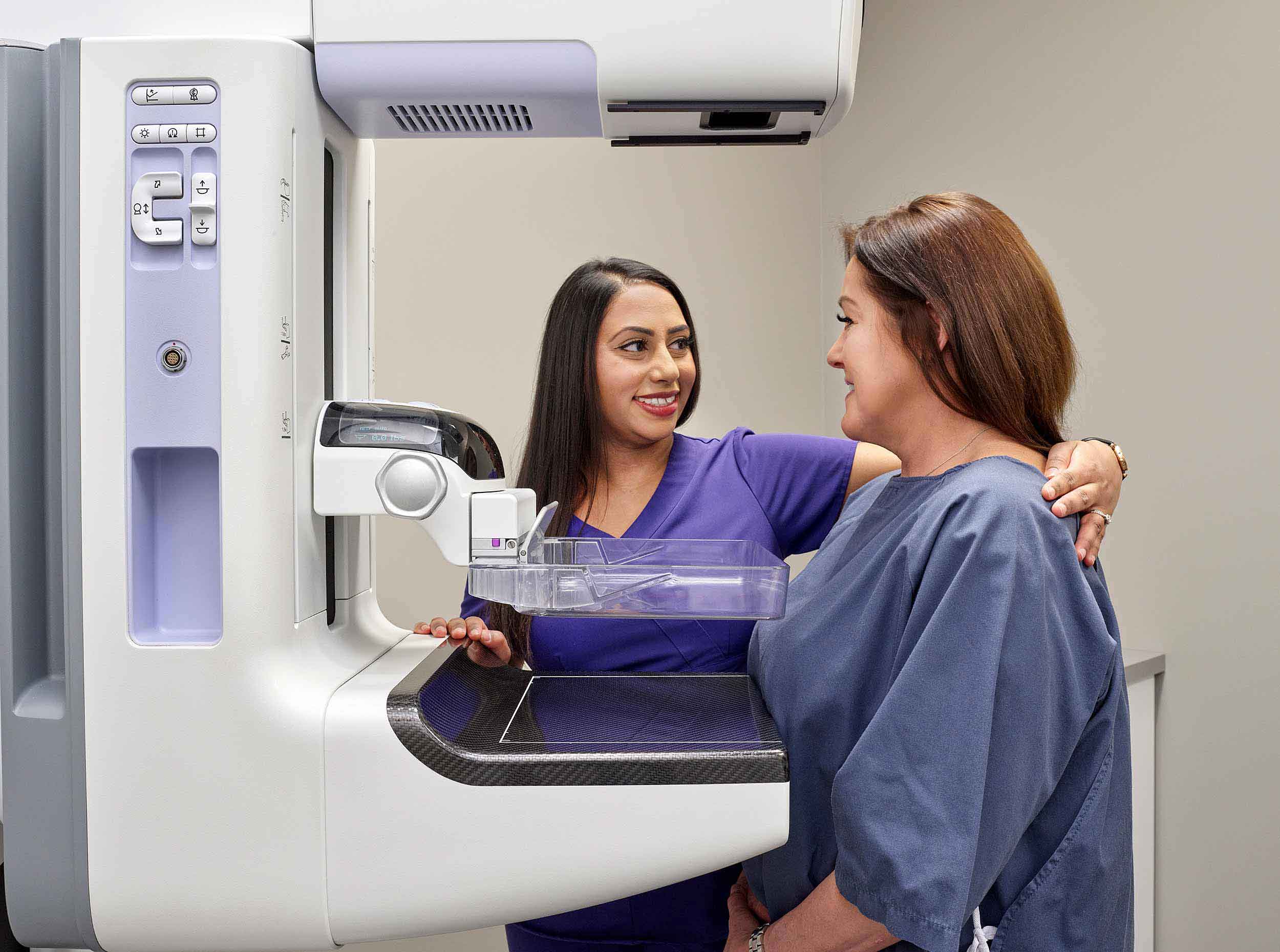On Monday, October 17, 2022, the Alberta Breast Cancer Screening Clinical Practice Guidelines1 were updated to help Albertans make informed decisions about breast cancer screening. The guidelines were last updated in 2013. Over the past nine years, more data and new scientific evidence have surfaced to support the update.
The Minimum Age for Screening has Been Lowered
The key takeaway from the Alberta Health Services update is that the recommended age for starting biennial breast cancer screening (every two years) for asymptomatic women, transgender, gender diverse, and non-binary people has been lowered from 50 to 45.
As committee Co-Chair Dr. Huiming Yang said, “more evidence has become available to show net benefits of breast cancer screening at a younger age.”6
Asymptomatic individuals are classified as average-risk. These people do not meet any criteria for higher-than-average or high risk, so they are considered average risk. Most of the public falls into this category.
Updated Screening Guidelines: Average-Risk Population
| 39 Years & Under | 40 to 44 Years | 45 to 74 Years | 75+ Years |
|---|---|---|---|
| Screening is not recommended | Routine screening is not recommended. It may be considered based on informed discussion and individual preference. | Screening is recommended. | Consider individual health factors and personal preferences to continue screening. |
| – | The optimal interval for those requesting screening is one mammogram every calendar year. | The optimal screening interval is one mammogram every two calendar years. | – |
Why Was the Minimum Age Lowered?
Under the previous recommendations, participation rates for people in Alberta aged 45-49 were 24%.1 By contrast, participation rates for the recommended screening age groups, 50-74, were 65%.2
Despite the lower volume of screening in the 45–49-year-old age group when following previous guideline recommendations, 246 breast cancers were detected in Albertans aged 45-49 in 2018, compared to 287 breast cancers in Albertans aged 50-54.1
New evidence also demonstrated a mortality reduction by starting screening before age 50. 3,4,5,9
Another consideration is the recommended screening interval. While one trial in the United Kingdom showed no difference in mortality between people randomized to annual screening versus triennial screening, the tumours detected in the annual group were significantly smaller.7
Modelling studies suggest that compared to annual screening, biennial screening preserves at least 80% of the benefit of annual screening with almost 50% fewer false-positive results.8
Guideline Review Approach
The new Alberta Breast Cancer Screening Clinical Practice Guidelines have been reviewed by a provincial committee comprised of professionals from radiology, family medicine, nursing, medical oncology, public health & preventative medicine, surgery, and the public. The revised screening guidelines represent the collective input of the experts on the committee.
Moving Forward
Soon, women will be able to self-refer for screening mammograms at 45 years of age. Individuals between 45 and 74 can expect to receive invitation letters in the mail from the Screening for Life program. If women choose to undergo screening between 40 to 44 years, a requisition is required from the referring practitioner for the first screening appointment.
It is important to note that the balance of benefits and harms may change as new information and data becomes available over time. As such, the breast cancer screening guidelines will continue to be updated accordingly as the goal remains to help Albertans and their healthcare providers make informed decisions about breast cancer screening.
Screening Resources for Albertans
Breast imaging is the best way to detect cancer early when treatment is likely to be more effective.
Albertans looking for additional information on breast cancer screening should visit the following:
- ScreeningForLife.ca to learn more about the provincial breast screening program
- Alberta Health Services to access patient education resources on breast screening
- Alberta Society of Radiologists (ASR) to find mammography clinics across Alberta
2). Alberta Health Services. (2020). Percentage of women 50-74 who have a screening mammogram within a 30-month period. Retrieved from https://tableau.albertahealthservices.ca/#/views/AlbertaBreastCancerScreeningRate30months/Par-ticipationRate-Zone50-74?:iid=1
3). Canadian Task Force on Preventative Health Care. (2011). Recommendations on screening for breast cancer in average-risk women aged 40–74 years. CMJA. 2011;183(17):1991-2001. Retrieved from https://www.ncbi.nlm.nih.gov/pmc/articles/PMC3225421/
4). Duffy SW, Vulkan D, Cuckle H, et al. (2020). Effect of mammographic screening from age 40 years on breast cancer mortality (UK Age trial): final results of a randomised, controlled trial. Lancet Oncol. 2020;21(9):1165-1172. doi:10.1016/S1470-2045(20)30398-3
5). Eby P. (2017). Evidence to Support Screening Women Annually. Radiol Clin North Am. 2017;55(3):441-456. doi:10.1016/j.rcl.2016.12.003
6). Gibson, C., (2022). Alberta Lowers Age for Women To Be Screened For Breast Cancer. Global News. https://globalnews.ca/news/9206883/alberta-breast-cancer-screening-age-lowered/
7). Group BSFT. (2002). The frequency of breast cancer screening: results from the UKCCCR Randomised Trial. United Kingdom Co-ordinating Committee on Cancer Research. Eur J Cancer. 2002;38(11):1458-1464. https://pubmed.ncbi.nlm.nih.gov/12110490/
8). Mandelblatt JS, Cronin KA, Bailey S, et al. (2009). Effects of mammography screening under different screening schedules: Model estimates of potential benefits and harms. Ann Intern Med. 2009;151(10):738-747. doi:10.1059/0003-4819-151-10-200911170-00010
9). Ray KM, Joe BN, Freimanis RI, Sickles EA, Hendrick RE. (2017). Screening Mammography in Women 40–49 Years Old: Current Evidence. Am J Roent¬genol. 2017;210(2):264-270. doi:10.2214/AJR.17.18707
